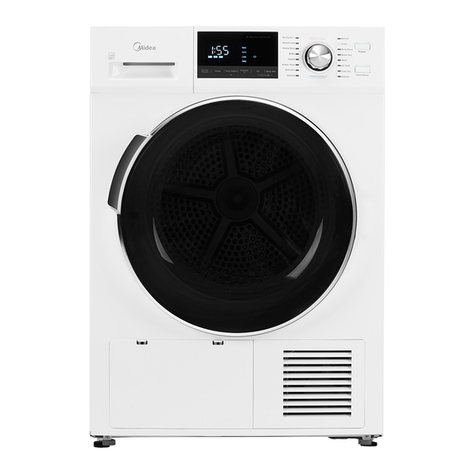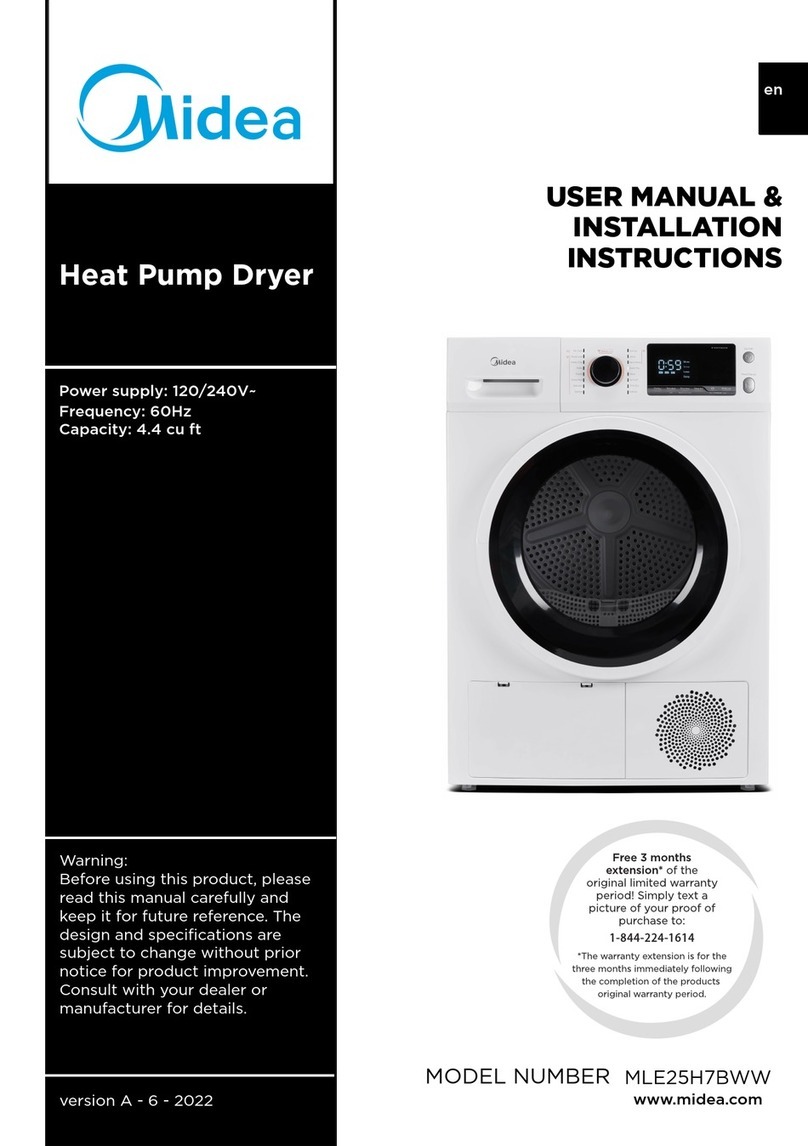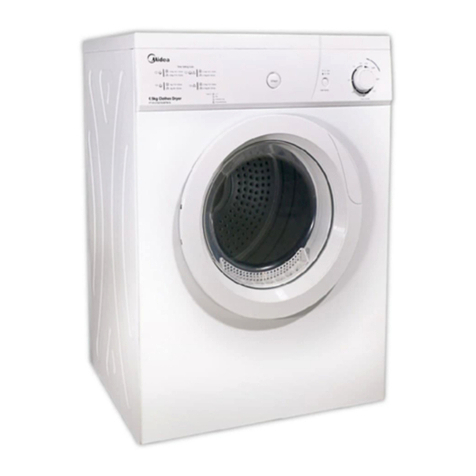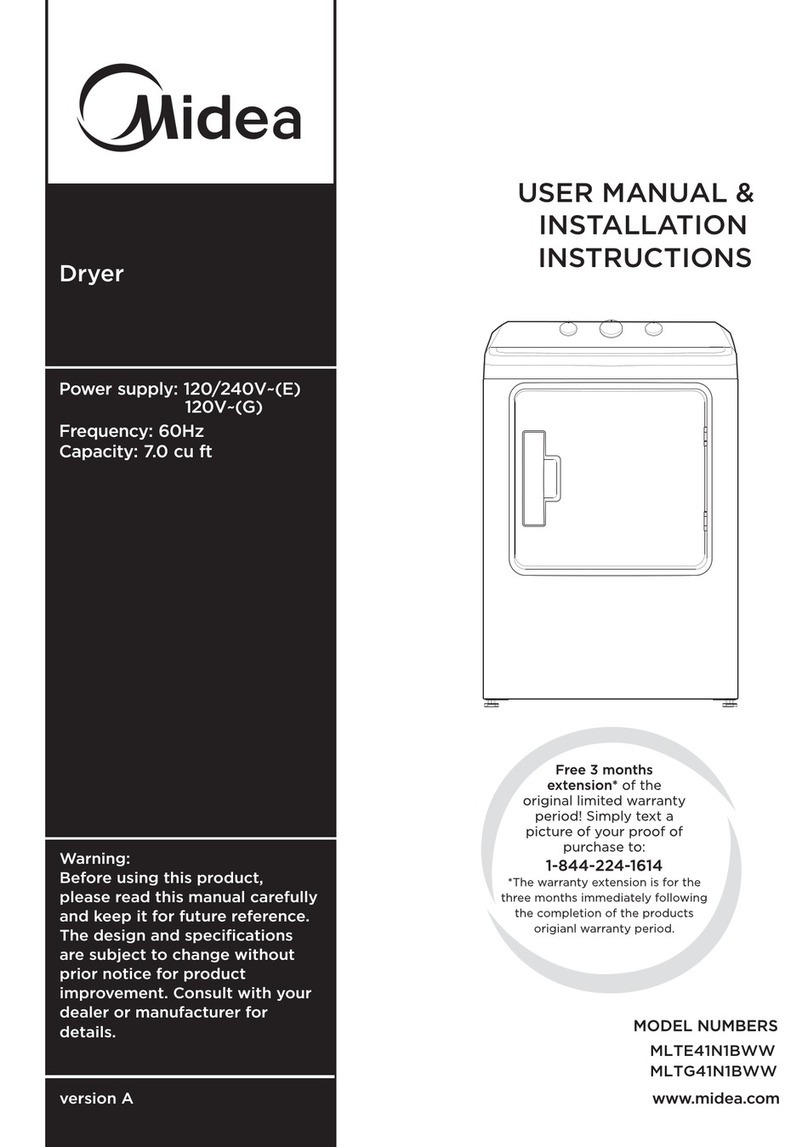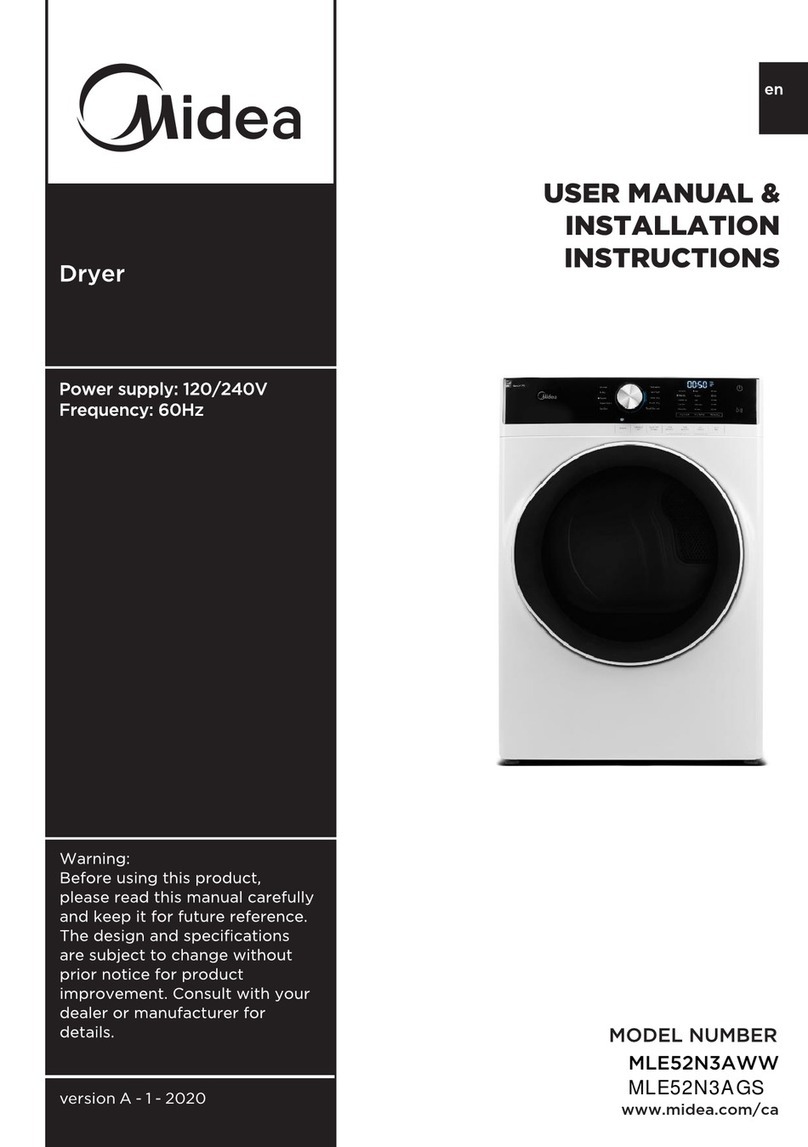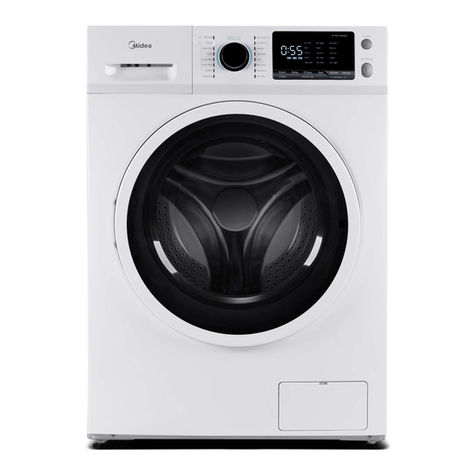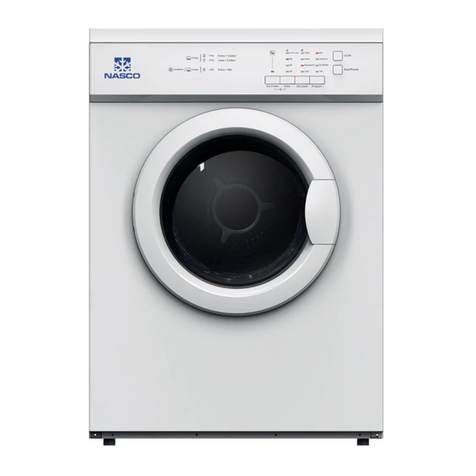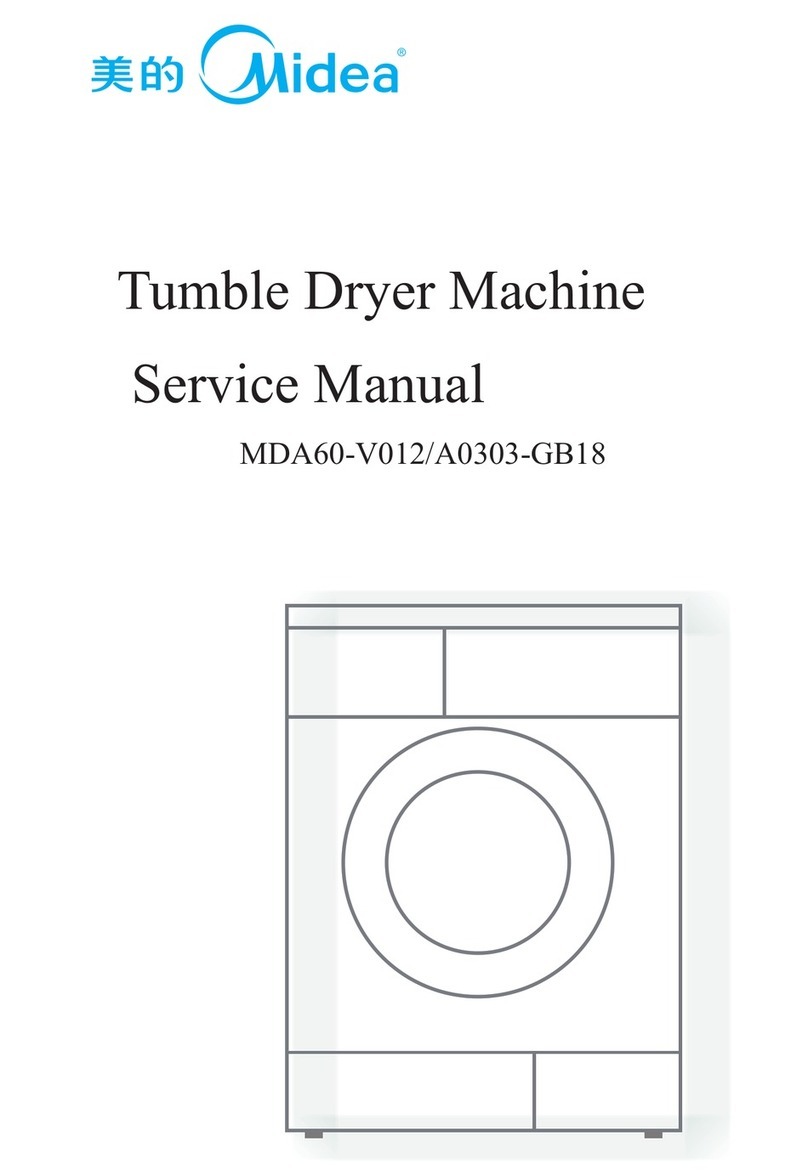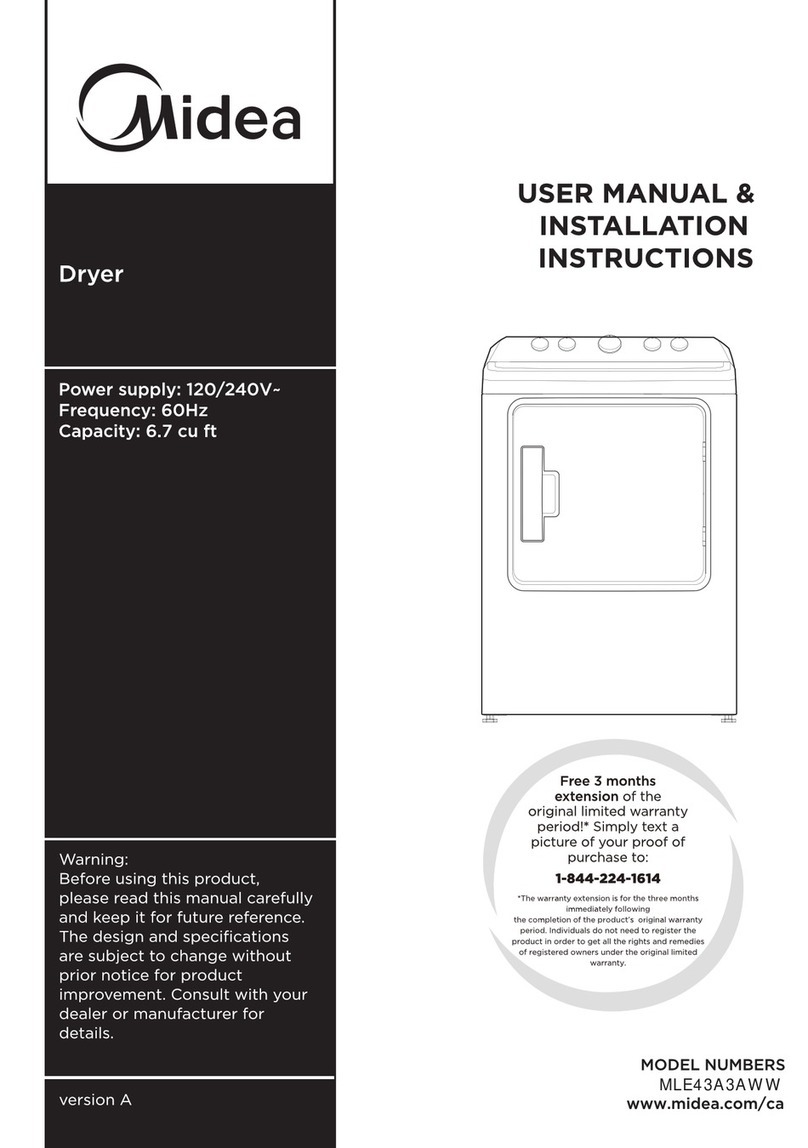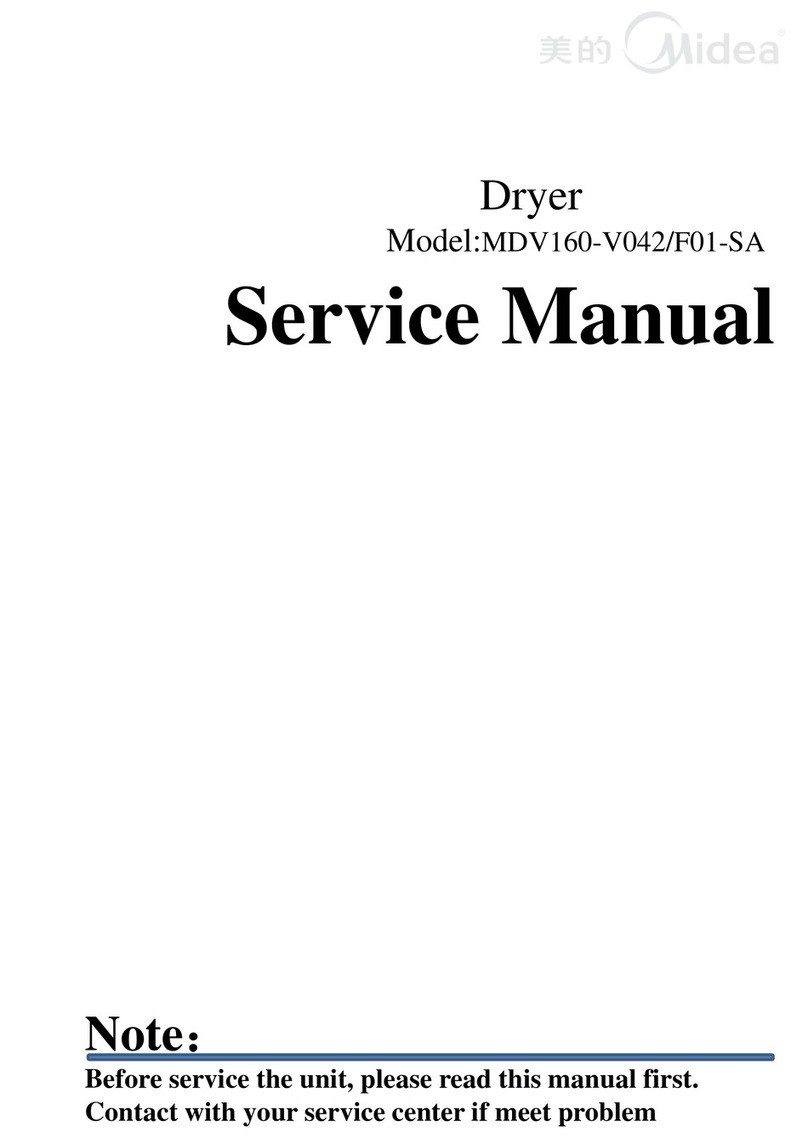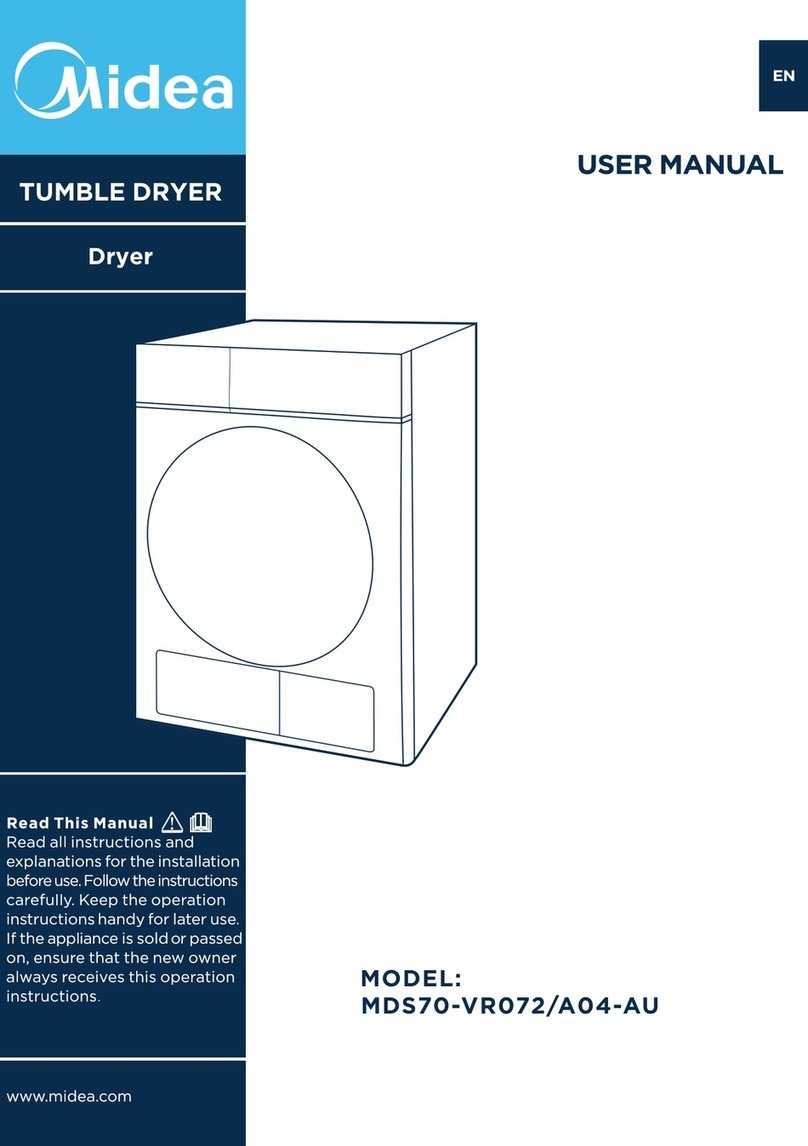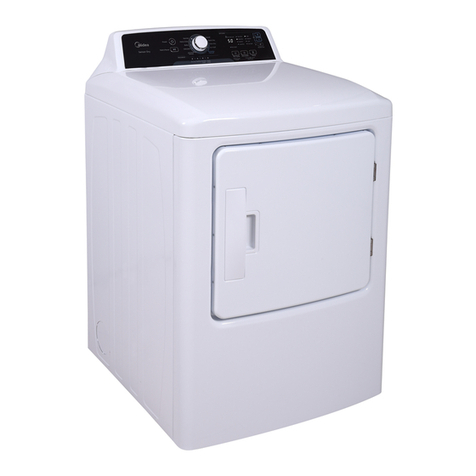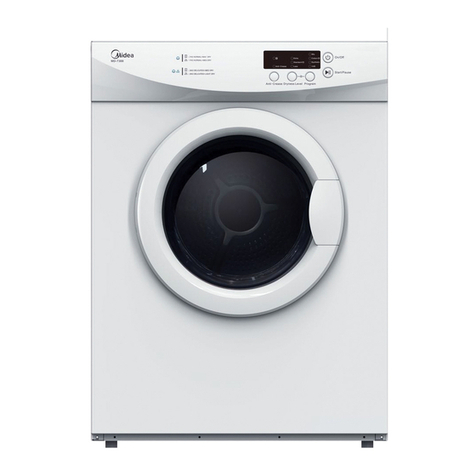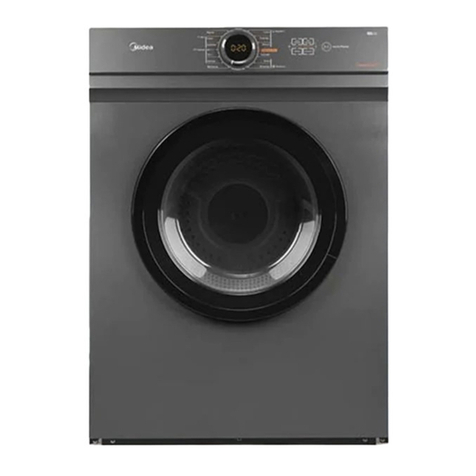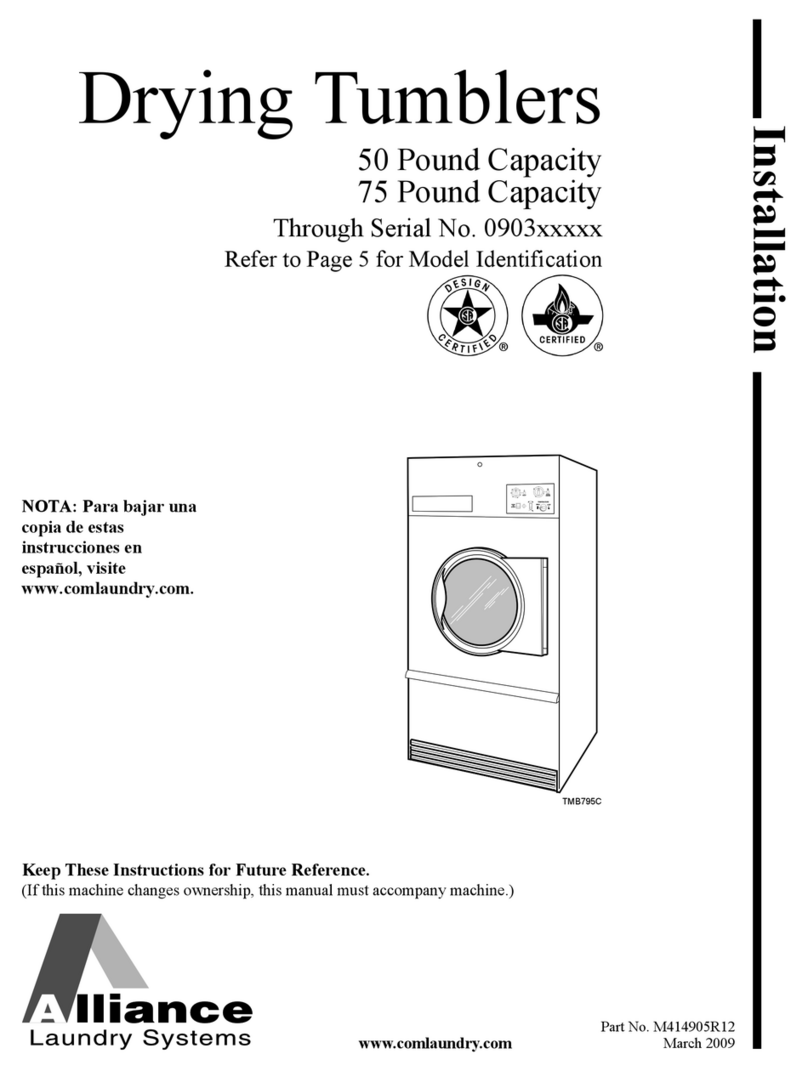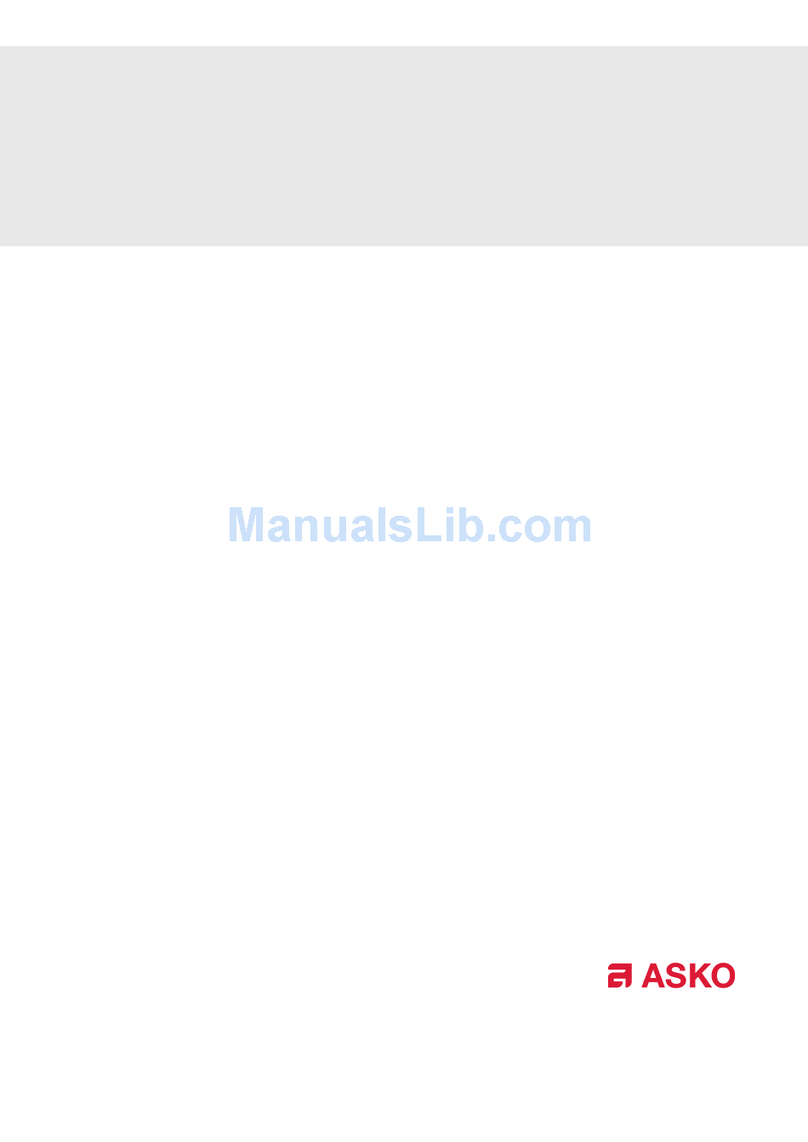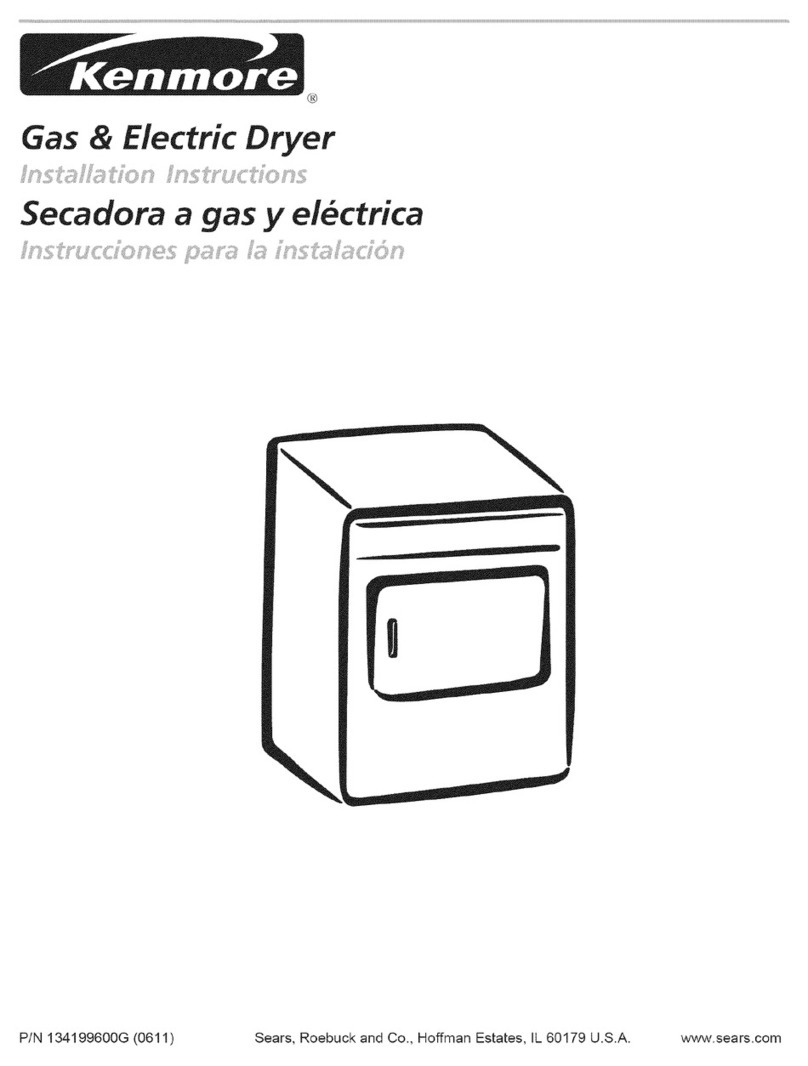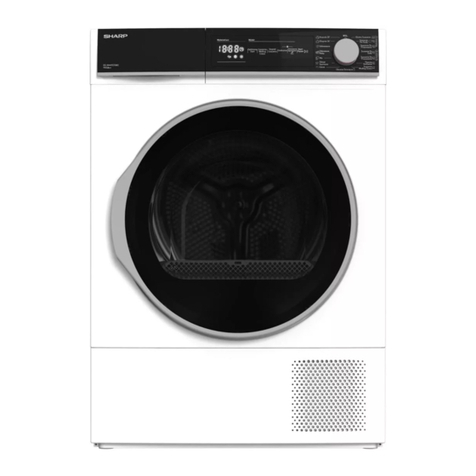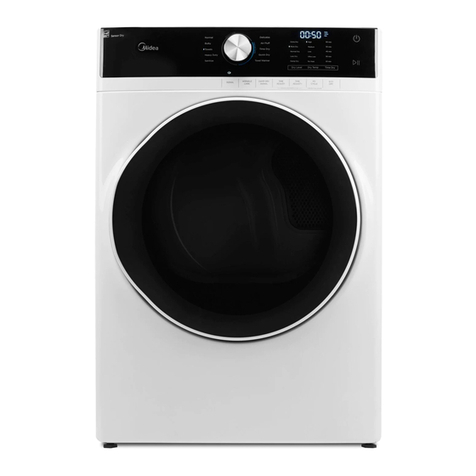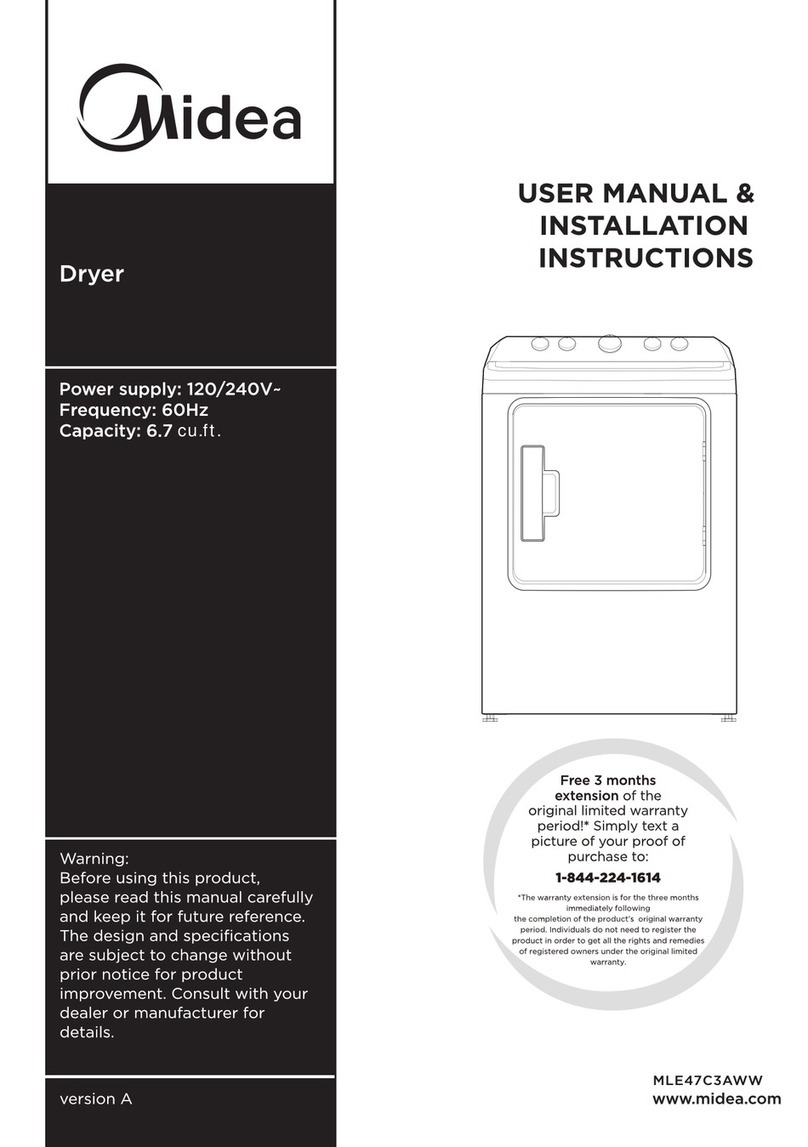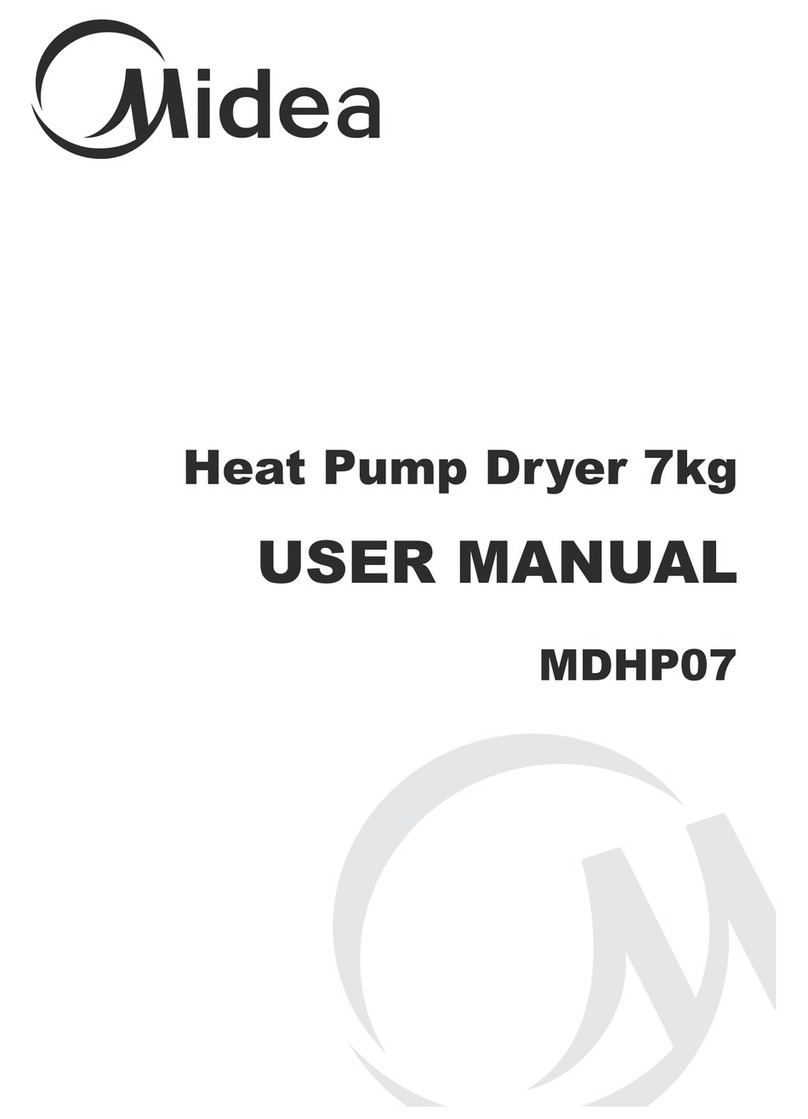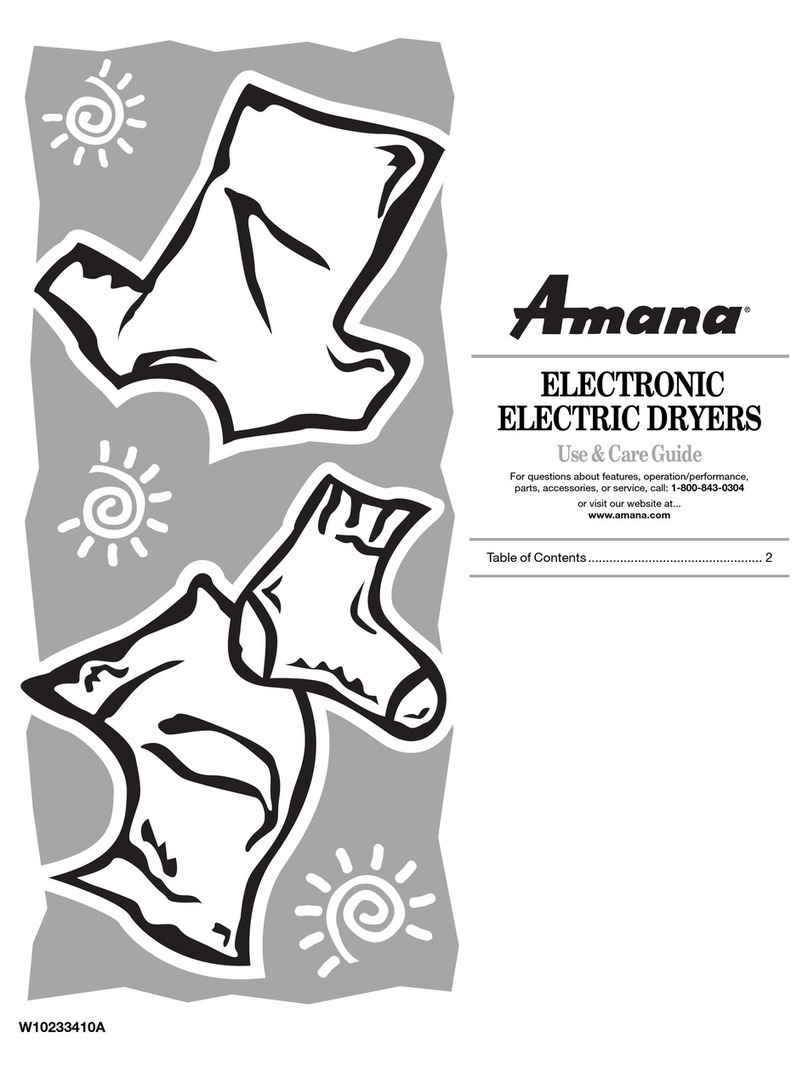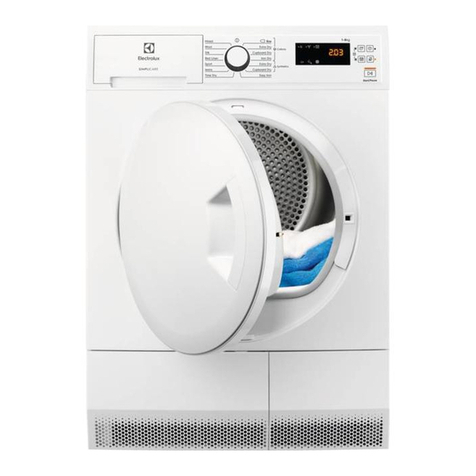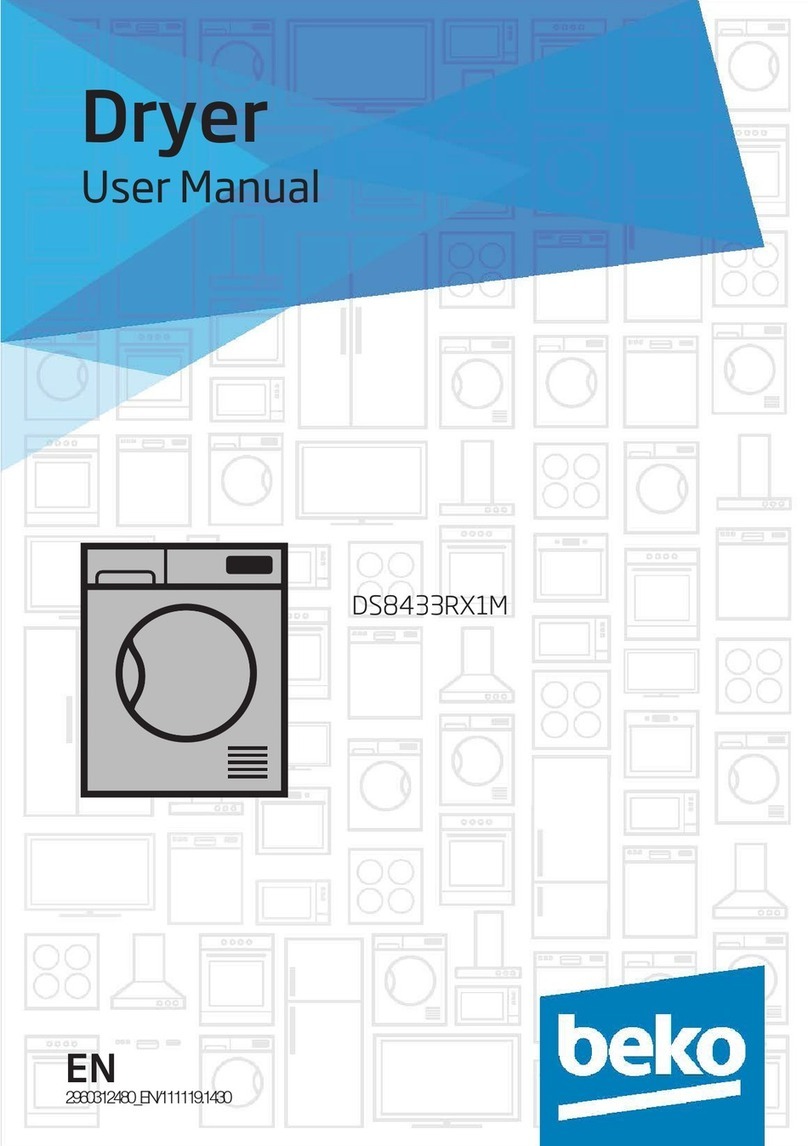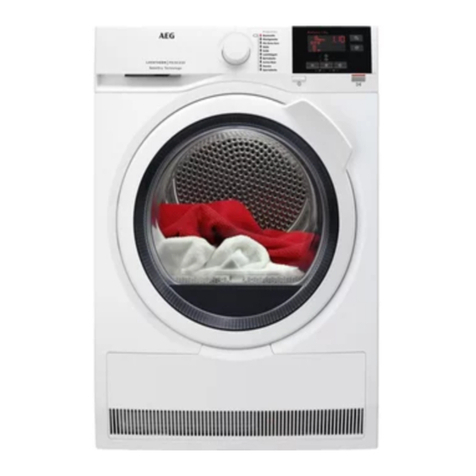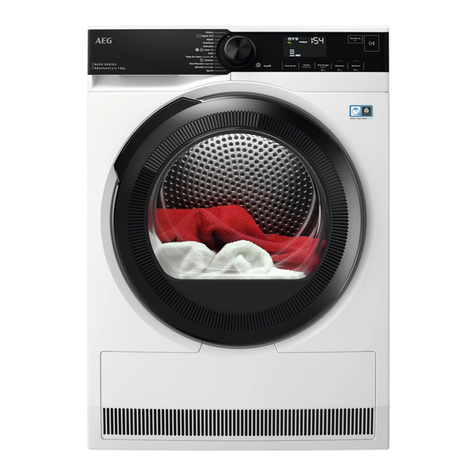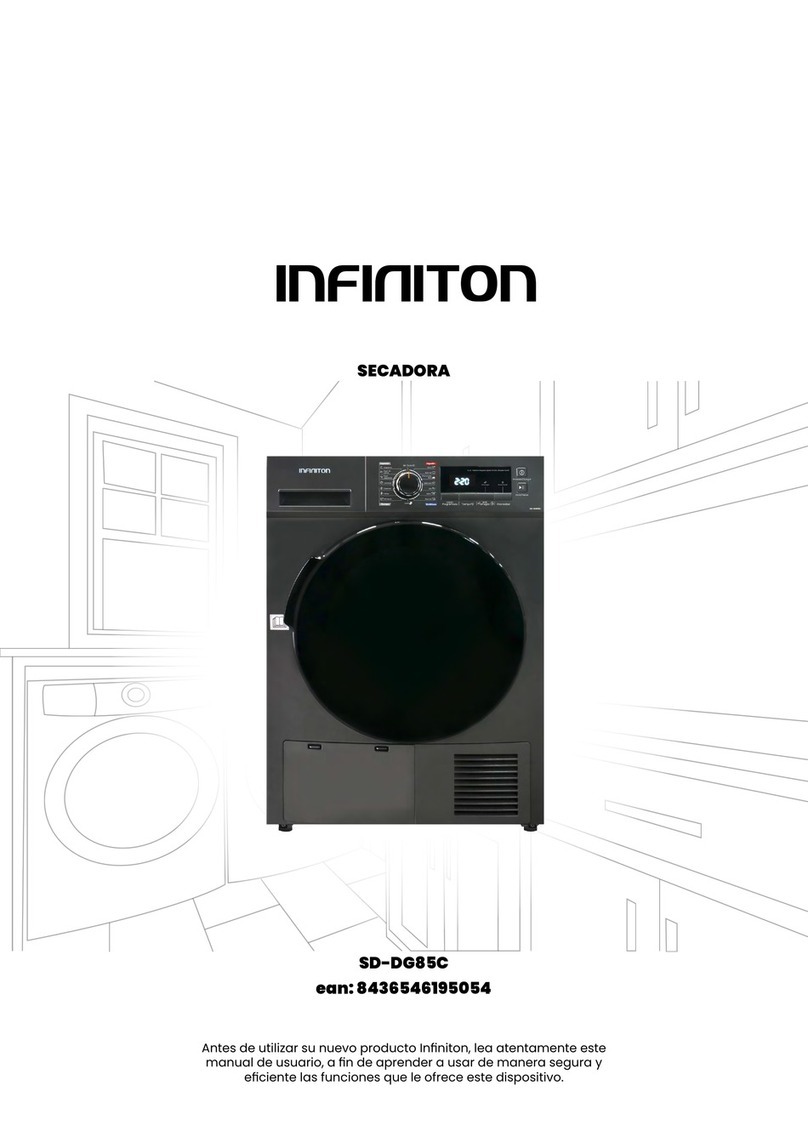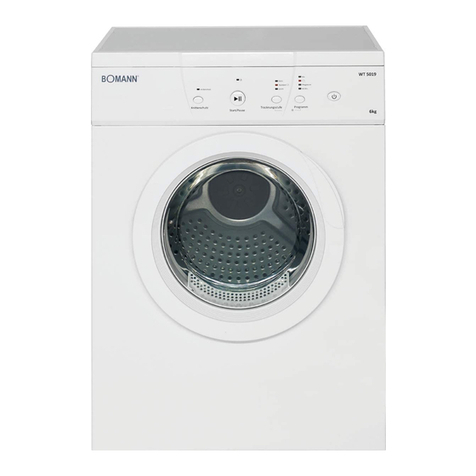
6
Dryer
Safety
Operation
Requirements
Parts and
Features
Installation
Instructions Dryer Use
Appendix
Dryer Care
Troubleshooting
Turn off the water faucets and unplug the washer if the machine is to
be left for an extended period of time, such as during vacations.
Packaging material can be dangerous for children. There is a risk of
suffocation! Keep all packaging items from children.
Always check the inside of the dryer for foreign objects before
loading laundry. Keep the door closed when not in use.
Do not use fabric softeners or by-products to eliminate static unless
recommended by the manufacturer of the fabric softener or product
manufacture.
Clean the lint screen before or after each load.
Keep the area around the exhaust opening and surrounding areas
free from lint, dust, and dirt.
Keep interior of the dryer and exhaust duct periodically clean. If
necessary use services qualified service personnel.
Do not place items exposed to cooking oils in your dryer. Items
contaminated with cooking oils may contribute to a chemical
reaction that could cause a load to catch fire.
This appliance must be grounded. See “Electric Requirements” and
“Grounding” in the “Operation Requirements” section.
This appliance must be properly grounded. Never plug the power
cord into a receptacle that is not grounded adequately and in
accordance with local and national codes. Refer to installation
instructions for grounding this appliance.
Ensure pockets are free from small irregularly shaped hard objects
and foreign material, i.e. coins, knives, pins, etc. These objects could
damage your dryer and clothes.
2]\]bcaSVSObbo dry articles containing foam rubber or similarly
textured rubber like - materials.
WARNING
To reduce the risk of fire or explosion
Do not dry items that have been previously cleaned, washed, soaked,
or spotted with gasoline, dry cleaning solvents, or other flammable or
explosive substances. They emit vapors that could ignite or explode.
Any material that has been in contact with a cleaning solvent or
flammable liquids or solids should not be placed in the dryer until all
traces of these flammable liquids or solids and their fumes have been
removed.
There are many highly flammable items used in homes, such
as acetone, denatured alcohol, gasoline, kerosene, some liquid
household cleaners, some spot removers, turpentine, waxes, and wax
removers.
Do not dry items containing foam rubber (may be labeled latex
foam) or similarly textured rubber-like materials on a heat setting.
Heated foam rubber materials can, under certain circumstances,
produce fire by spontaneous combustion.
